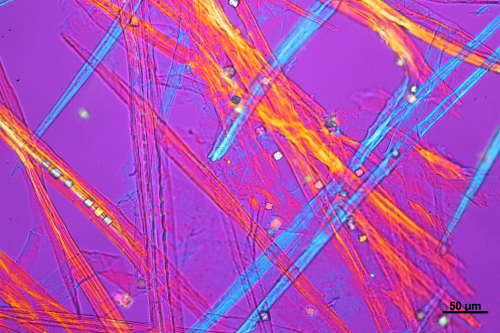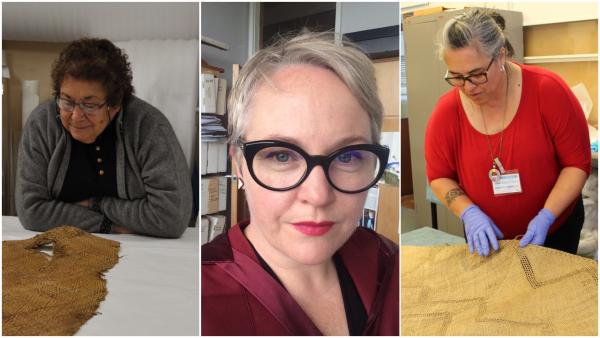Whakaarahia anō te rā kaihau! Raise up again the billowing sail! Revitalising cultural knowledge through analysis of Te Rā, the Māori sail

Dr Catherine Smith of the University of Otago, Ms Donna Campbell of University of Waikato and Mrs Ranui Ngarimu will study the only remaining Māori sail. They will combine Māori weaving knowledge with innovative materials identification to provide insights into this unique object and the voyages that first brought people to Aotearoa New Zealand
Published 2 November 2017

Ranui Ngarimu at the Museum of Archaeology and Anthropology (left), Dr Catherine Smith (middle), Donna Campbell at the British Museum
Sailing is central to our national history, yet little is known of the customary Māori sails that first brought people to Aotearoa New Zealand. Te Rā is the last known remaining Māori sail in existence. This sail is thought to have been collected by Captain Cook, and it has since largely remained hidden from public view in storage at the British Museum in London. Te Rā provides physical evidence of Māori voyaging traditions and navigation skills, and can contribute to our understanding of their historical and cultural importance. Yet the sail’s construction and materials have never been studied systematically.
In a new Marsden Fund grant, a multi-disciplinary team of scientists, weavers, and artists led by Dr Catherine Smith of the University of Otago, Ms Donna Campbell of the University of Waikato and Mrs Ranui Ngarimu will examine the sail using both innovative technology and customary methods. Interdisciplinary analysis of feathers, plants and skin used in making the sail (polarised light microscopy, DNA, light microscopy), as well as cutting-edge imaging and modelling technologies (photogrammetry, Reflectance Transformation Imaging, Computational Fluid Dynamics) will provide new insights into Te Rā’s origins and function. At the same time, customary weavers and artists will document and replicate the weave stucture of Te Rā, revitalising cultural practice and rediscovering Māori technologies in the process.
The project is a unique collaboration between Mātauranga Māori (Māori knowledge) and Western science, which will generate new cultural, scientific, and historical understanding of Māori voyaging. The researchers plan to share these findings to engage New Zealanders with the story of an unparalleled journey that brought people to the world’s last unexplored landmass, Aotearoa New Zealand.
